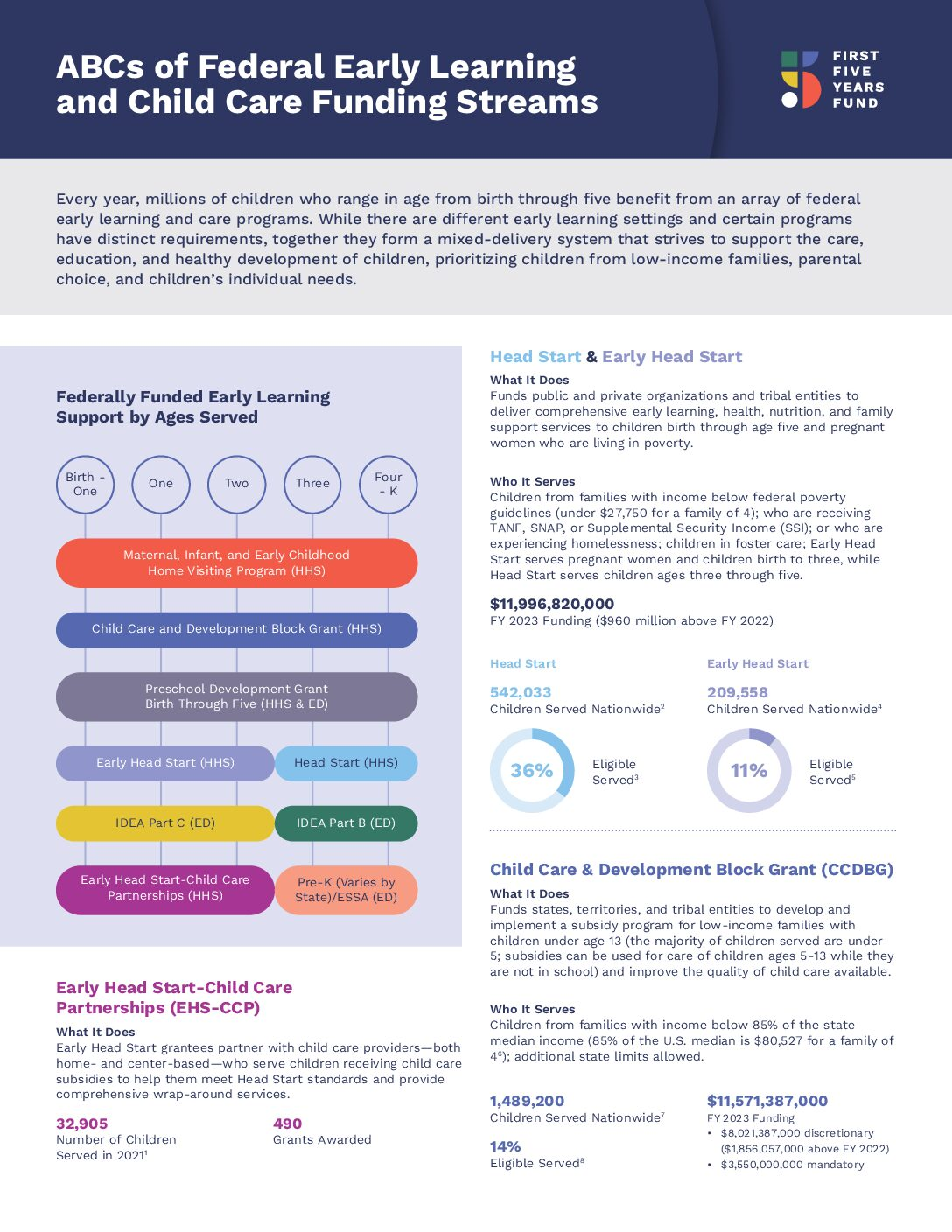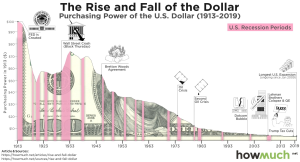Federally funded childcare has emerged as a vital support system for working mothers, illuminating pathways to gender equity in the workplace. Recent research by renowned economist Claudia Goldin highlights the transformative potential of such programs, particularly through the lens of the World War II-era Lanham Act, which provided crucial resources for working families. This legislation not only catered to mothers but also reshaped the dynamics of female labor, demonstrating how public investment can bolster workforce participation. As we delve deeper into the historical impact of federal childcare programs, it becomes evident that well-structured support is essential to empower women in the workplace today. By understanding these past initiatives, we can advocate for contemporary solutions that address the childcare needs of working mothers across the nation.
Childcare assistance funded by federal initiatives plays a significant role in facilitating the balance between employment and family life for mothers. The historical context presented by the Lanham Act sheds light on how governmental support has been pivotal in creating accessible care solutions for families, especially during challenging times like the World War II era. Claudia Goldin’s research is instrumental in illustrating not only the benefits of such programs but also the necessity of recognizing women’s contributions in the workforce. By leveraging federal resources, we can shape modern childcare policies that support women as they navigate careers while raising children. Ultimately, understanding the evolution of these childcare services can inform our current quest for equitable solutions for all working parents.
The Impact of Federally Funded Childcare on Working Mothers
Federally funded childcare programs, particularly during the World War II era, showcased the significant role that support systems can play in the lives of working mothers. Claudia Goldin’s research into the Lanham Act highlights how these programs not only provided essential childcare services but also helped integrate women into the workforce at a crucial time in history. By offering safe and nurturing environments for children, these federally funded nurseries allowed mothers to focus on their jobs without the constant worry about their children’s well-being, thus transforming the notion of women in the workplace.
Goldin notes that the implementation of the Lanham Act’s childcare provisions represented a shift in societal attitudes towards working mothers. With men deployed overseas, mothers were seen as vital contributors to the labor force, and the establishment of these nurseries was a testament to the changing dynamics of gender roles during that era. Furthermore, the benefits extended beyond immediate labor needs; they also laid the groundwork for future federal childcare programs that sought to reduce the barriers faced by working mothers, proving that when governments invest in childcare, they empower an entire generation of women.
Lessons from the Lanham Act for Today’s Childcare Policies
The lessons drawn from the Lanham Act are invaluable for modern policymakers who are seeking to improve childcare accessibility for working mothers today. Goldin’s research provides a historical context that illustrates how federal initiatives can significantly impact women’s workforce participation. By analyzing the successes and limitations of the 1940s childcare programs, current leaders can develop strategies that address both the demand for childcare and the socio-economic factors influencing women in the labor market. For instance, broadening the scope of federally funded childcare to include various socioeconomic backgrounds could lead to more inclusive workplace policies that promote gender equity.
Additionally, Goldin’s findings point to the need for a multifaceted approach to childcare systems, incorporating education, nutrition, and safety into care programs. Today’s childcare policies must recognize the diverse needs of families, particularly as more mothers are entering or re-entering the workforce. By taking cues from the past, modern federal childcare programs can be more effectively designed to deliver comprehensive support to working mothers, ultimately benefiting families and the economy as a whole.
The Role of Women in the Workforce and Childcare
The relationship between women participating in the workforce and access to childcare has evolved but remains a central issue. As Claudia Goldin’s research highlights, societal perceptions heavily influence women’s roles as both caregivers and professionals. Historical contexts like the Lanham Act demonstrate that when given the appropriate support—through federally funded childcare—women can thrive in professional settings. Today’s workforce must recognize the importance of balancing these roles, as continued progress towards gender equity relies on providing working mothers with the resources they need.
Moreover, as economies shift and the need for dual-income households increases, understanding the unique challenges faced by working mothers becomes imperative. Policies focusing on extensive childcare options, such as those outlined in Goldin’s studies, are vital for allowing women to maintain their career trajectories without compromising their family responsibilities. Companies that embrace this understanding and offer supportive childcare solutions can lead the way in fostering a more equitable workplace, ultimately benefiting all employees.
Claudia Goldin’s Research and its Modern Implications
Claudia Goldin’s groundbreaking research offers critical insights into the historical and ongoing challenges faced by women in the workforce. By dissecting the effects of the Lanham Act, she provides a framework for assessing how federal childcare initiatives can reshape economic landscapes. Modern parallels can be drawn from her analysis, showing that when governments actively promote and support working mothers through childcare provisions, economic growth and labor market participation can see significant improvements.
Furthermore, her work prompts an important discussion on the evolution of federal childcare programs, such as Head Start, and how they differ from those established under the Lanham Act. Goldin’s comparative analysis encourages policymakers to rethink current childcare systems, focusing on inclusivity and accessibility for all working families rather than a limited demographic. Such a shift is essential for promoting gender equality in the labor force and ensuring that all mothers have the opportunity to advance professionally.
The Historical Context of Childcare Services
Understanding the historical context of childcare services like those provided under the Lanham Act is essential for grasping current debates around family support systems. Initiated during World War II, these services were not just a response to immediate labor needs; they represented a sea change in societal perspectives towards women in the workforce. Goldin’s research emphasizes that the integration of women into roles traditionally held by men required robust support systems, highlighting the value of federally funded childcare in enabling women to succeed in these roles.
Moreover, examining this historical precedent reveals the long-standing implications of childcare support on economic policies. The establishment of such programs during a national crisis showcases how essential they can be to ensuring that women can contribute meaningfully to the economy. Today’s challenges, such as the increasing demand for working mothers to participate in the job market, make it clear that revisiting policies rooted in past successes can lead to innovative solutions for contemporary issues.
Current Challenges in Childcare for Working Mothers
Despite the progress made since the days of the Lanham Act, challenges in childcare accessibility for working mothers remain prevalent. High costs, insufficient government support, and a shortage of quality childcare facilities often act as barriers that prevent women from fully committing to their careers. Reflecting on Goldin’s research underlines the necessity for comprehensive childcare strategies that address these issues, ensuring that families can access affordable options that facilitate both work and child-rearing.
Additionally, the stigma associated with working mothers persists, as evidenced by public attitudes that question women’s roles at home versus in their careers. By learning from the past, contemporary discourse can shift towards fostering a more inclusive environment that embraces working mothers as integral to economic prosperity. Effective policy reform aimed at expanding federally funded childcare programs can directly influence public sentiment by showcasing the value women bring to the workforce.
Revisiting the Lanham Act: A Model for Today
The Lanham Act serves as a historical model for how federal childcare programs can empower working mothers and reshape the labor force. Claudia Goldin’s examination of this legislation presents actionable insights that can guide contemporary policy-making. Modern iterations of such support mechanisms should prioritize creating an inclusive framework that addresses the diverse needs of families, particularly during economically challenging times. By revisiting this model, policymakers can develop improved solutions that reflect today’s demands.
Furthermore, reevaluating the successes and shortcomings of the Lanham Act can inform current debates about federal childcare initiatives. The data surrounding the efficacy of these programs during World War II illustrates a strong correlation between childcare support and increased female labor participation. This historical evidence underscores the importance of investing in childcare as a means of fostering economic growth and social equity—a lesson that remains profoundly relevant today.
Encouraging Policy Change for Women’s Empowerment
To achieve gender equity in the workplace, it is crucial to encourage policy changes that provide robust support for working mothers. Goldin’s findings point to the effectiveness of historical federally funded programs in uplifting women and facilitating their integration into the workforce. Thus, contemporary advocacy must focus on establishing a more comprehensive system that guarantees affordable and accessible childcare services, which in turn can empower women and promote economic stability.
Moreover, mobilizing political will to create and sustain childcare initiatives is essential. This means engaging stakeholders, including businesses, community leaders, and policymakers, in dialogue about the importance of childcare for economic development. Aligning these interests can lead to the emergence of policies that not only support working mothers but also acknowledge the broader implications of women’s participation in the workforce, fostering a more equitable society for future generations.
Future Directions for Childcare Reform
Looking forward, the future direction of childcare reform must focus on comprehensive strategies that include both federal and local initiatives. Goldin’s research calls attention to the need for a multifaceted approach that meets the varying needs of today’s families. This involves not only expanding access to affordable childcare but also enhancing the quality of services provided, ensuring that all children receive the best foundation for personal and academic growth.
Moreover, embracing innovation in childcare systems, such as technology-driven solutions and flexible care arrangements, will be essential in addressing the evolving demands of the modern workforce. As society continues to shift, the lessons learned from programs like the Lanham Act will guide the development of effective and sustainable childcare policies aimed at empowering women and strengthening the economy. Policymakers are encouraged to collaborate with community organizations to create a united front for enhancing childcare solutions that promote social equity and economic growth.
Frequently Asked Questions
What is federally funded childcare, and how does it impact working mothers?
Federally funded childcare refers to financial assistance programs provided by the government to help cover the costs of childcare for working mothers. These programs, like those established under the Lanham Act during World War II, play a crucial role in enabling women to participate in the workforce by easing the burden of childcare responsibilities.
How did the Lanham Act childcare program support women in the workplace?
The Lanham Act childcare program was specifically designed to support working mothers by providing federally funded nurseries and extended childcare services during World War II. This program allowed women to enter the labor force to aid in the war effort, highlighting the importance of access to childcare for women in the workplace.
What lessons from Claudia Goldin’s research on federally funded childcare can be applied today?
Claudia Goldin’s research on federally funded childcare, particularly the Lanham Act, underscores the significance of supportive policies for working mothers. It demonstrates that when the government invests in childcare infrastructure, women’s workforce participation increases, promoting gender equity in the workplace.
Are there current federal childcare programs available for working mothers?
Yes, there are several federal childcare programs aimed at assisting working mothers today. These include the Child Care and Development Fund (CCDF), Head Start, and others that provide financial support and resources to make childcare more accessible for families, especially those with low incomes.
How does access to federally funded childcare affect women’s employment rates?
Access to federally funded childcare significantly boosts women’s employment rates by removing the barriers of childcare costs and availability. When women are assured of reliable and affordable childcare, they are more likely to seek and maintain employment, which is essential for economic growth.
What historical evidence supports the effectiveness of federally funded childcare, like the Lanham Act?
Historical evidence from the Lanham Act shows that federally funded childcare can effectively increase women’s participation in the workforce. During World War II, the program allowed many women to take on jobs that were critical to the war effort, demonstrating the lasting impact of childcare support on women’s employment opportunities.
How do federally funded childcare programs contribute to gender equity in the workplace?
Federally funded childcare programs contribute to gender equity in the workplace by enabling women to pursue careers without the overwhelming burden of childcare. By making childcare services accessible and affordable, these programs help level the playing field and empower women to achieve professional success.
What challenges do federally funded childcare programs face today?
Federally funded childcare programs face several challenges today, including underfunding, varying state implementation, and limited availability of services. These issues can hinder the effectiveness of programs aimed at supporting working mothers and achieving gender equity in the workforce.
How can working mothers advocate for better federally funded childcare options?
Working mothers can advocate for better federally funded childcare options by engaging in community organizing, contacting their representatives, and supporting policies that increase funding for childcare programs. Raising awareness about the importance of accessible childcare for women’s workforce participation is crucial for driving change.
What role does federal policy play in shaping childcare options for working mothers?
Federal policy plays a significant role in shaping childcare options by determining funding levels, eligibility, and program structures. Policies that prioritize childcare funding can significantly impact the availability and quality of services for working mothers, thus influencing their ability to work.
| Key Points |
|---|
| Federally funded childcare has historical roots in the World War II-era Lanham Act, which provided support for working mothers |
| Claudia Goldin’s research highlights the significant impact of this funding in creating nurseries and extended care services for children aged 2-11. |
| The Lanham Act was initially aimed at supporting the labor force during WWII and operated extensively from 1943-1946, distributing nearly $52 million. |
| The program primarily benefited mothers who were already working and helped them gain access to higher-wage jobs. |
| Despite the negative sentiment towards working mothers at the time, the war led to a change in perception, deeming their employment essential for the economy. |
Summary
Federally funded childcare has proven to be a pivotal element in supporting working mothers, especially as demonstrated by the Lanham Act during World War II. Claudia Goldin’s research underlines how this historical program not only facilitated the entry of many women into the workforce but also helped reshape societal views on the employment of mothers. As we consider current childcare policies, revisiting the lessons learned from the Lanham Act could provide valuable insights into enhancing support systems for families today.




